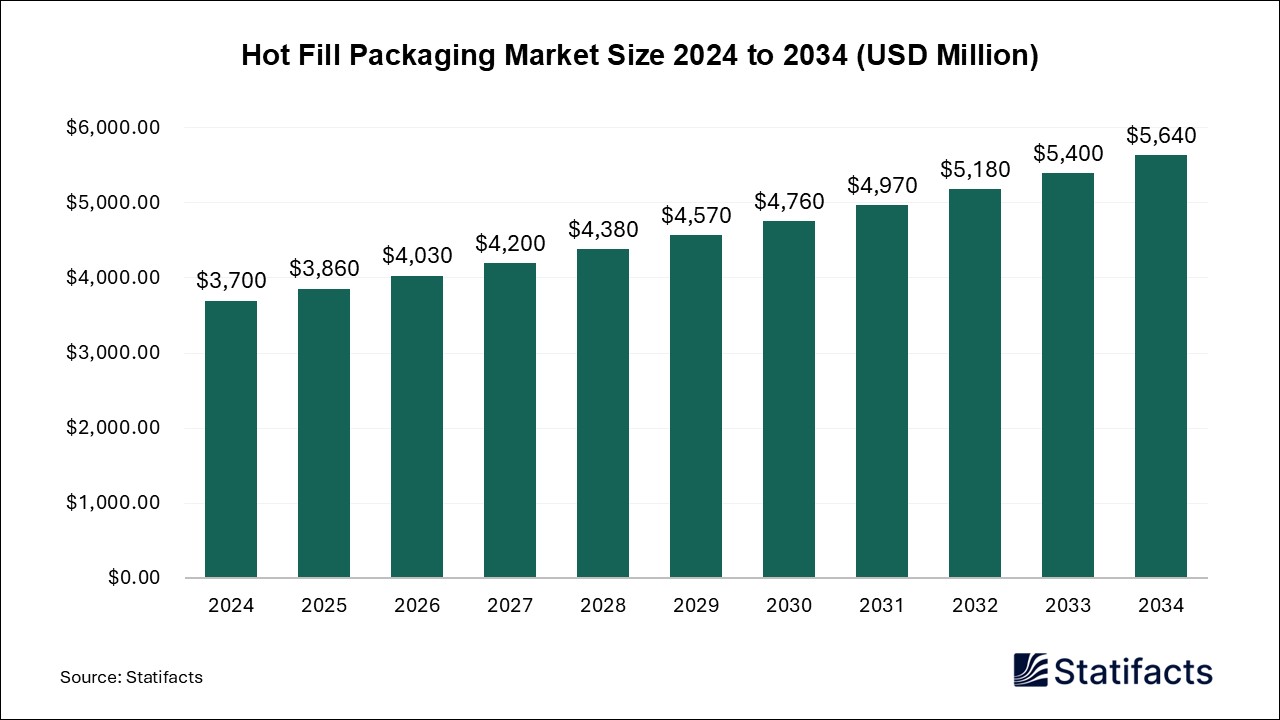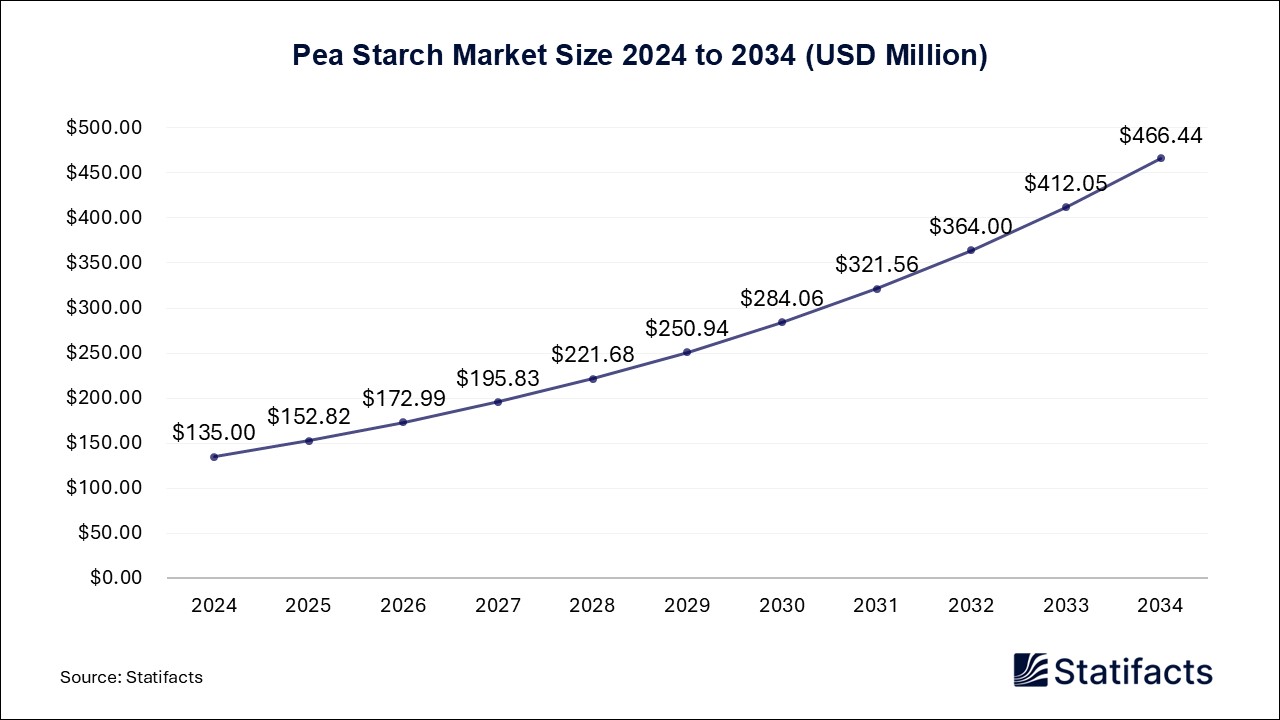
By clicking “Accept All Cookies” you agree to the storing of cookies on your device to enhance site navigation, analyze site usage, and assist in our marketing efforts.
Privacy PolicyDisposable Endoscopes Market (By Product: Laparoscopes, Arthroscopes, Ureteroscopes, Cystoscopes, Gynecology Endoscopes, Neuroendoscopes, Bronchoscopes, Hysteroscopes, Laryngoscopes, Otoscopes, Nasopharyngoscopes, Rhinoscopes, Gastrointestinal Endoscopes, Gastroscope (Upper GI Endoscope), Enteroscope, Sigmoidoscope, Duodenoscope, and Colonoscope; By End Use: Hospitals and Outpatient Facilities; By Region: North America, Europe, Asia Pacific, and LAMEA) Industry Size, Share, Growth, Trends 2025 to 2034
| Reports Attributes | Statistics |
| Market Size in 2024 | USD 2.62 Billion |
| Market Size in 2025 | USD 2.98 Billion |
| Market Size in 2031 | USD 6.44 Billion |
| Market Size by 2034 | USD 9.46 Billion |
| CAGR 2025 to 2034 | 13.7% |
| Base Year | 2024 |
| Forecast Period | 2025 to 2034 |
The market’s momentum is largely influenced by the global effort to prevent hospital-acquired infections and improve turnaround times in endoscopic procedures. Disposable endoscopes are particularly valuable in high-risk cases and emergency care, where the immediate availability of sterile devices can be critical. The growing number of minimally invasive procedures and the rising prevalence of gastrointestinal, urological, and pulmonary disorders have also fueled demand. Healthcare authorities and institutions across developed regions are increasingly mandating infection control standards that encourage the adoption of disposable endoscopic devices.
The primary driver of the market is the increasing focus on infection prevention and hygiene within healthcare environments. Traditional reusable endoscopes require complex cleaning and reprocessing steps that can introduce contamination risks if not performed correctly. Disposable alternatives eliminate these challenges and ensure consistent safety standards. The convenience of single-use devices also reduces operational downtime, allowing healthcare providers to perform more procedures within the same time frame.
Additionally, rising awareness of patient safety, along with government-backed healthcare reforms, is accelerating adoption. The use of disposable endoscopes is expanding beyond hospitals into ambulatory surgical centers, where efficiency and infection control are key priorities. The growing number of outpatient procedures worldwide is further strengthening the demand for portable, cost-effective, and ready-to-use endoscopic tools.
Despite their benefits, disposable endoscopes face challenges related to cost and accessibility. Their per-unit pricing remains higher than reusable models, which can limit adoption in smaller healthcare facilities, particularly in developing regions. Limited reimbursement policies and the initial cost of transitioning from reusable to disposable systems can also slow market penetration. Supply chain constraints and production costs linked to the use of advanced materials further affect market growth.
However, there are significant opportunities emerging through innovation and sustainability initiatives. Manufacturers are exploring recyclable components and eco-friendly materials to address environmental concerns associated with single-use devices. The growing focus on sustainable healthcare is expected to drive research into hybrid models that balance disposability with reusability. The rapid expansion of healthcare infrastructure in Latin America, the Middle East, and Asia-Pacific also presents growth prospects as these regions invest in modern medical technologies and infection-free healthcare practices.
Artificial Intelligence and Machine Learning are reshaping the disposable endoscopes market by enhancing diagnostic accuracy and procedural efficiency. AI-powered imaging systems assist in detecting lesions, polyps, and other disease indicators with higher precision, particularly in gastroenterology. These systems analyze real-time visuals to support clinicians during procedures, improving detection rates and reducing diagnostic errors.
AI is also being integrated into inventory management, allowing hospitals and ambulatory centers to predict device demand and optimize supply chain operations. The ability to track usage patterns and automate reordering helps reduce waste and ensure availability during emergencies. As AI and ML continue to evolve, they are expected to make disposable endoscopy systems smarter, more efficient, and better aligned with the goals of modern digital healthcare.
The future of the disposable endoscopes market looks promising as healthcare systems continue to prioritize safety, efficiency, and technological innovation. Governments and regulatory bodies are encouraging the adoption of infection-free medical solutions through updated safety guidelines and funding for advanced medical technologies. North America and Europe currently dominate the market due to established healthcare infrastructure and strong regulatory frameworks, while Asia-Pacific is emerging as a fast-growing region supported by increasing surgical volumes and expanding healthcare access.
The integration of robotics, wireless imaging, and AI-assisted visualization is expected to define the next generation of disposable endoscopes. As hospitals seek cost-effective and sustainable infection-control solutions, the market will continue to evolve toward intelligent, single-use devices that improve clinical outcomes and patient safety across the global healthcare landscape.
| Regions | Shares (%) |
| North America | 35% |
| Asia Pacific | 25% |
| Europe | 30% |
| LAMEA | 10% |
| Segments | Shares (%) |
| Laparoscopes | 7% |
| Arthroscopes | 6% |
| Ureteroscopes | 8% |
| Cystoscopes | 7% |
| Gynecology Endoscopes | 5% |
| Neuroendoscopes | 4% |
| Bronchoscopes | 10% |
| Hysteroscopes | 5% |
| Laryngoscopes | 5% |
| Otoscopes | 4% |
| Segments | Shares (%) |
| Hospitals | 70% |
| Outpatient Facilities | 30% |
Published by Kesiya Chacko
| Product | 2024 | 2025 | 2026 | 2027 | 2028 | 2029 | 2030 | 2031 | 2032 | 2033 | 2034 |
|---|---|---|---|---|---|---|---|---|---|---|---|
| Laparoscopes | 0.18 | 0.20 | 0.23 | 0.26 | 0.29 | 0.32 | 0.36 | 0.40 | 0.44 | 0.49 | 0.55 |
| Arthroscopes | 0.16 | 0.18 | 0.20 | 0.22 | 0.24 | 0.27 | 0.30 | 0.33 | 0.37 | 0.41 | 0.46 |
| Ureteroscopes | 0.21 | 0.24 | 0.28 | 0.32 | 0.36 | 0.42 | 0.48 | 0.55 | 0.63 | 0.72 | 0.83 |
| Cystoscopes | 0.18 | 0.21 | 0.24 | 0.27 | 0.30 | 0.34 | 0.39 | 0.44 | 0.50 | 0.57 | 0.64 |
| Gynecology Endoscopes | 0.13 | 0.15 | 0.17 | 0.19 | 0.22 | 0.25 | 0.28 | 0.32 | 0.36 | 0.41 | 0.46 |
| Neuroendoscopes | 0.10 | 0.12 | 0.13 | 0.15 | 0.17 | 0.20 | 0.22 | 0.25 | 0.29 | 0.32 | 0.37 |
| Bronchoscopes | 0.26 | 0.30 | 0.35 | 0.40 | 0.47 | 0.54 | 0.62 | 0.72 | 0.83 | 0.96 | 1.10 |
| Hysteroscopes | 0.13 | 0.15 | 0.17 | 0.19 | 0.22 | 0.25 | 0.28 | 0.32 | 0.36 | 0.41 | 0.46 |
| Laryngoscopes | 0.13 | 0.15 | 0.17 | 0.19 | 0.22 | 0.25 | 0.28 | 0.32 | 0.36 | 0.41 | 0.46 |
| Otoscopes | 0.10 | 0.12 | 0.13 | 0.15 | 0.17 | 0.20 | 0.22 | 0.25 | 0.29 | 0.32 | 0.37 |
| Nasopharyngoscopes | 0.08 | 0.09 | 0.10 | 0.11 | 0.13 | 0.15 | 0.17 | 0.19 | 0.21 | 0.24 | 0.28 |
| Rhinoscopes | 0.08 | 0.09 | 0.10 | 0.11 | 0.13 | 0.15 | 0.17 | 0.19 | 0.21 | 0.24 | 0.28 |
| Gastroscope (Upper GI Endoscope) | 0.18 | 0.21 | 0.24 | 0.28 | 0.32 | 0.37 | 0.42 | 0.49 | 0.56 | 0.64 | 0.73 |
| Enteroscope | 0.16 | 0.18 | 0.20 | 0.23 | 0.26 | 0.29 | 0.33 | 0.38 | 0.43 | 0.49 | 0.55 |
| Sigmoidoscope | 0.16 | 0.18 | 0.20 | 0.23 | 0.26 | 0.29 | 0.33 | 0.38 | 0.43 | 0.49 | 0.55 |
| Duodenoscope | 0.18 | 0.21 | 0.24 | 0.27 | 0.30 | 0.34 | 0.39 | 0.44 | 0.50 | 0.57 | 0.64 |
| Colonoscope | 0.18 | 0.21 | 0.24 | 0.28 | 0.32 | 0.37 | 0.42 | 0.49 | 0.56 | 0.64 | 0.73 |
| End Use | 2024 | 2025 | 2026 | 2027 | 2028 | 2029 | 2030 | 2031 | 2032 | 2033 | 2034 |
|---|---|---|---|---|---|---|---|---|---|---|---|
| Hospitals | 1.83 | 2.08 | 2.36 | 2.67 | 3.03 | 3.44 | 3.89 | 4.42 | 5.01 | 5.67 | 6.43 |
| Outpatient Facilities | 0.79 | 0.90 | 1.03 | 1.18 | 1.35 | 1.54 | 1.77 | 2.02 | 2.31 | 2.65 | 3.03 |
| Subsegment | 2024 | 2025 | 2026 | 2027 | 2028 | 2029 | 2030 | 2031 | 2032 | 2033 | 2034 |
|---|---|---|---|---|---|---|---|---|---|---|---|
| Laparoscopes | 0.18 | 0.20 | 0.23 | 0.26 | 0.29 | 0.32 | 0.36 | 0.40 | 0.44 | 0.49 | 0.55 |
| Arthroscopes | 0.16 | 0.18 | 0.20 | 0.22 | 0.24 | 0.27 | 0.30 | 0.33 | 0.37 | 0.41 | 0.46 |
| Ureteroscopes | 0.21 | 0.24 | 0.28 | 0.32 | 0.36 | 0.42 | 0.48 | 0.55 | 0.63 | 0.72 | 0.83 |
| Cystoscopes | 0.18 | 0.21 | 0.24 | 0.27 | 0.30 | 0.34 | 0.39 | 0.44 | 0.50 | 0.57 | 0.64 |
| Gynecology Endoscopes | 0.13 | 0.15 | 0.17 | 0.19 | 0.22 | 0.25 | 0.28 | 0.32 | 0.36 | 0.41 | 0.46 |
| Neuroendoscopes | 0.10 | 0.12 | 0.13 | 0.15 | 0.17 | 0.20 | 0.22 | 0.25 | 0.29 | 0.32 | 0.37 |
| Bronchoscopes | 0.26 | 0.30 | 0.35 | 0.40 | 0.47 | 0.54 | 0.62 | 0.72 | 0.83 | 0.96 | 1.10 |
| Hysteroscopes | 0.13 | 0.15 | 0.17 | 0.19 | 0.22 | 0.25 | 0.28 | 0.32 | 0.36 | 0.41 | 0.46 |
| Laryngoscopes | 0.13 | 0.15 | 0.17 | 0.19 | 0.22 | 0.25 | 0.28 | 0.32 | 0.36 | 0.41 | 0.46 |
| Otoscopes | 0.10 | 0.12 | 0.13 | 0.15 | 0.17 | 0.20 | 0.22 | 0.25 | 0.29 | 0.32 | 0.37 |
| Nasopharyngoscopes | 0.08 | 0.09 | 0.10 | 0.11 | 0.13 | 0.15 | 0.17 | 0.19 | 0.21 | 0.24 | 0.28 |
| Rhinoscopes | 0.08 | 0.09 | 0.10 | 0.11 | 0.13 | 0.15 | 0.17 | 0.19 | 0.21 | 0.24 | 0.28 |
| Gastroscope (Upper GI Endoscope) | 0.18 | 0.21 | 0.24 | 0.28 | 0.32 | 0.37 | 0.42 | 0.49 | 0.56 | 0.64 | 0.73 |
| Enteroscope | 0.16 | 0.18 | 0.20 | 0.23 | 0.26 | 0.29 | 0.33 | 0.38 | 0.43 | 0.49 | 0.55 |
| Sigmoidoscope | 0.16 | 0.18 | 0.20 | 0.23 | 0.26 | 0.29 | 0.33 | 0.38 | 0.43 | 0.49 | 0.55 |
| Duodenoscope | 0.18 | 0.21 | 0.24 | 0.27 | 0.30 | 0.34 | 0.39 | 0.44 | 0.50 | 0.57 | 0.64 |
| Colonoscope | 0.18 | 0.21 | 0.24 | 0.28 | 0.32 | 0.37 | 0.42 | 0.49 | 0.56 | 0.64 | 0.73 |
| Subsegment | 2024 | 2025 | 2026 | 2027 | 2028 | 2029 | 2030 | 2031 | 2032 | 2033 | 2034 |
|---|---|---|---|---|---|---|---|---|---|---|---|
| Hospitals | 1.83 | 2.08 | 2.36 | 2.67 | 3.03 | 3.44 | 3.89 | 4.42 | 5.01 | 5.67 | 6.43 |
| Outpatient Facilities | 0.79 | 0.90 | 1.03 | 1.18 | 1.35 | 1.54 | 1.77 | 2.02 | 2.31 | 2.65 | 3.03 |
To get full access to our Market Insights, you need a Professional Account or a Business Suite.

You will receive an email from our Business Development Manager. Please be sure to check your SPAM/JUNK folder too.

You will receive an email from our Business Development Manager. Please be sure to check your SPAM/JUNK folder too.

Our customers work more efficiently and benefit from



-aggregate-market.jpg)